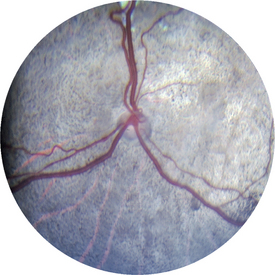Chapter 12 Optic Nerve
INTRODUCTION
Papilledema implies bilateral edema of the optic nerve head seen in the funduscopic view. It develops from stasis of axoplasmic flow, often resulting from elevated cerebrospinal fluid pressure associated with central nervous system (CNS) tumors. The eyes retain sight unless central blindness occurs because of the lesion in the brain.
< div class='tao-gold-member'>
Only gold members can continue reading. Log In or Register to continue
Stay updated, free articles. Join our Telegram channel

Full access? Get Clinical Tree



